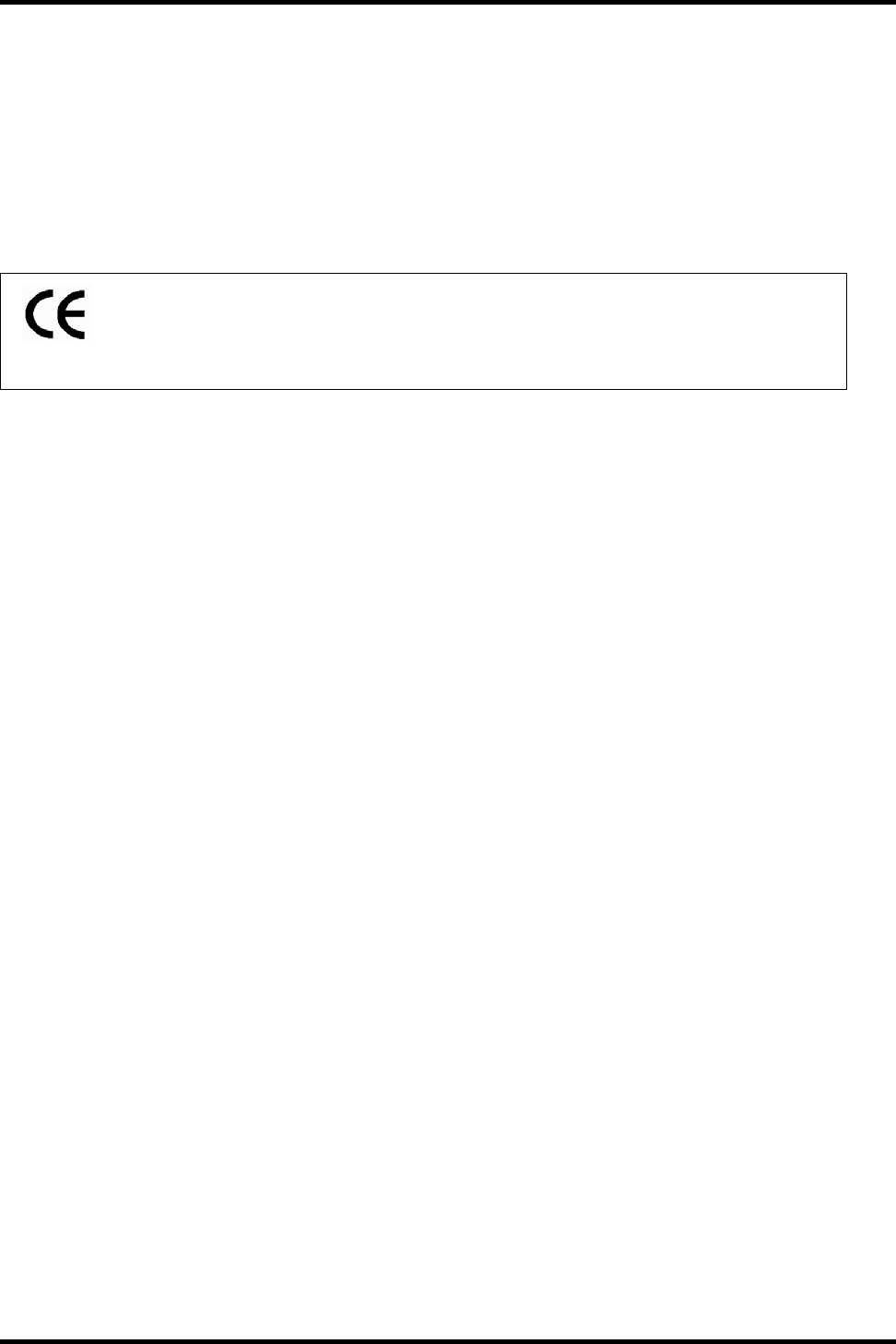
PREMIER SX USER MANUAL, MAINTENANCE GUIDE & LOG BOOK
Approved Document No: GLT.MAN-102
PAGE 3
Issue: 1.3 Authorised: GH Date: 9/6/2004
1. FIRE ALARM CONTROL PANEL SAFETY ISSUES
There is no need to open this fire alarm during normal operation. Any work carried out on this system must be
performed by a competent person who is familiar with this type of system.
This equipment will operate safely provided it has been installed correctly in compliance with the Installation
Manual.
It is recommended that the system is serviced frequently. It is customary to arrange a regular maintenance
contract with a competent organisation. (Ask the installation company for recommendations). The system
needs a thorough maintenance check annually at the very minimum.
If any part of this Fire Alarm Control Panel becomes damaged, contact the company responsible for system
maintenance to arrange repair / replacement.
C E European Union Directives Conformance Statement
This product has been manufactured in conformance with the requirements of all
applicable EU Council Directives. The Declaration of Conformance for this
product is located at the following Address: GLT Exports Ltd, 72-78 Morfa Road,
Hafod, Swansea, SA1 2EN, United Kingdom
2. THE PURPOSE OF A FIRE ALARM SYSTEM
A Fire Alarm System is used to provide an early warning of a fire, so that the property can be evacuated and
the fire extinguished if it can be safely tackled, or the local fire brigade called, according to the company
evacuation procedure.
Alarms can come from Smoke or Heat Detectors, or manually be a person operating a Manual Call Point.
Split the system into Zones, each covering a different area of a building. This will indicate which area of the
system is giving the alarm (or fault).
During an alarm, the panel will start its sounders, and indicate which zone has the fire. It will also activate its
auxiliary relay.
Fault Monitoring
All circuits must be checked for line integrity. If a part of the system has a problem which may affect its
operation, a fault warning must be given by the fire alarm panel (LED & buzzer indication). The fault relay will
also activate.
Disablements
An engineer may be required to work on part of a system, while the system is still active (eg extending a
detection zone). During such circumstances, it would be advisable to disable that zone, so that it will not give
false alarms. Similarly you may wish to disable a zone that has a fault that has not been fixed, or a zone
covering an area with a temporary unusual environment, such as an area which is dusty because of
construction work etc.
Delays
In public places, it may be desirable to delay the activation of an alarm until the responsible person has verified
the cause of the alarm. (This would avoid a panic evacuation caused by a smoky room, or a maliciously
activated call point.) On verification of the alarm, the sounders can be started by pressing the override button,
or the panel can be reset in the case of a false alarm. If a delay has been set, it must be recorded on the
system configuration chart at the back of this manual.
Power Supply Equipment- General Description.
The NPSX FACP has an integral linear power supply capable of supplying 1.2 amps in total. It contains a current
limited output for charging sealed lead acid batteries (7 Ah maximum). The PSE is monitored for main supply
failure, the battery not taking a charge and low battery voltage. If the battery voltage drops below approximately
20VDC (a fault condition), the battery charging current will be turned off , thus stopping charging. This PSE is
only capable of supplying power to the CIE, and is not designed for any other use.


















